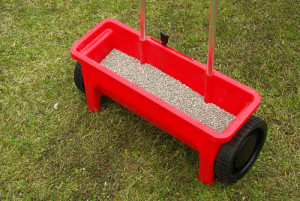Lawn Fertilizer – Fall Vs Winterizer Fertilizer – What’s the Difference?
If you own property, you probably know that you should fertilize the lawn. However, some home and business owners are unaware that lawn fertilization should be performed more than once per year. Fall fertilizer is required as is winterizer fertilizer. The winter variety is specially designed to help your grass make it through the winter while the fall fertilizer serves its own unique purposes. Let’s take a closer look at the differences between the two.
Fertilizer Overview
It is important to note that just about all bags of fertilizer have three numbers on the front. Each represents one of the primary ingredients within the fertilizer. These ingredients stand for potassium (K), phosphorous (P) and nitrogen (N). In general, lawn fertilizer formulas typically have a formula of 29-3-4. This means that the fertilizer has 29 percent nitrogen, 3 percent phosphorous and 4 percent potassium. Both fall and winterizer fertilizer stimulate root growth. Yet each contains its own unique mix of potassium, phosporous and nitrogen.
Fall Fertilizer
Fall fertilizer is specially designed to stimulate the growth of new roots. It contains a delicate balance of potassium and phosphorous designed to spur growth. This special blend allows the grass to “dig in” and prepare for the rough winter weather. Additionally, fall fertilizer sets the stage for the lawn’s roots to make full use of the winterizer fertilizer that will be added later in the year. Fall fertilizer works best when applied to soil that has a temperature that has dropped to a 70 degrees Fahrenheit. Yet it will not be as effective if applied when the soil temperature dips below 55 degrees.
Winterizer Fertilizer
Many lawn care experts are adamant that winterizer fertilizer is the most important of all fertilizer applications. It helps the roots of the grass absorb and store nutrients as they continue to grow until the ground eventually freezes at some point in the winter. These nutrients are then readily available when temperatures increase in the spring season.
Winterizer fertilizer should be applied about four to five weeks after the application of the fall fertilizer. Ideally, this will occur at some point in October or November. By this point, the new (but empty) roots have formed and the ground is moving toward the freezing mark. It is specially designed with high levels of nitrogen to promote the accumulation and storage of carbohydrates before the soil freezes. This nitrogen is held in reserve throughout the winter, in anticipation of the spring growing season. Winterizer fertilizer also contains more potassium than regular fertilizer. The role of the added potassium is to boost the grass’s tolerance for the cold and bolster the root systems.
Winterizer fertilizer does more than just prepare the grass for the nasty winter ahead. It also functions to feed the grass throughout the winter to keep it healthy and a lovely green shade (yes, even throughout the winter). Apply winterizer fertilizer in the proper amount at the right time and it will help your grass look an even more gorgeously rich green when the spring season rolls around a few months later. Aside from increasing grass aesthetics in the winter and spring, winterizer fertilizer’s influx of nutrients also induces quicker “green-up” growth in the early days of spring.
Your Lawn Deserves Both Fall and Winterizer Fertilizer
Do your lawn an enormous favor by applying both fall and winterizer fertilizer at the appropriate times. If you have any questions or concerns about your grass, landscaping or other outdoor maintenance issues like irrigation, water conservation or general repairs, do not hesitate to reach out to us for assistance.
Tagged: fall, Landscape Maintenance, winter
Both comments and pings are currently closed.






